Management and Operations
VerifiedAdded on 2023/02/02
|14
|986
|25
Presentation
AI Summary
This presentation discusses the functions and principles of management, the difference between leadership and management, and provides a brief background on Marks and Spencer. It also explores different theories of leadership and the management and leadership structure of Marks and Spencer.
Contribute Materials
Your contribution can guide someone’s learning journey. Share your
documents today.
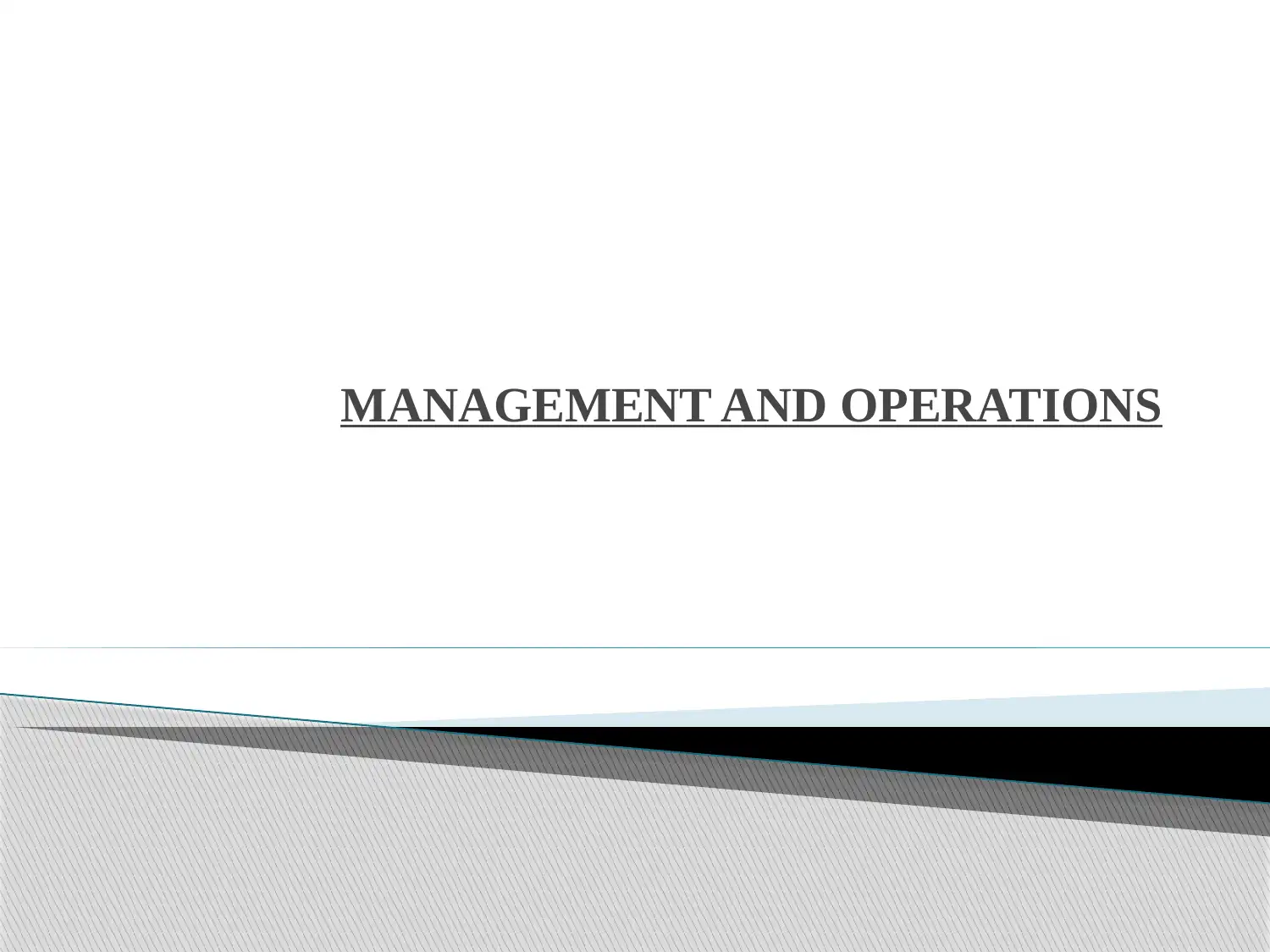
MANAGEMENT AND OPERATIONS
Secure Best Marks with AI Grader
Need help grading? Try our AI Grader for instant feedback on your assignments.
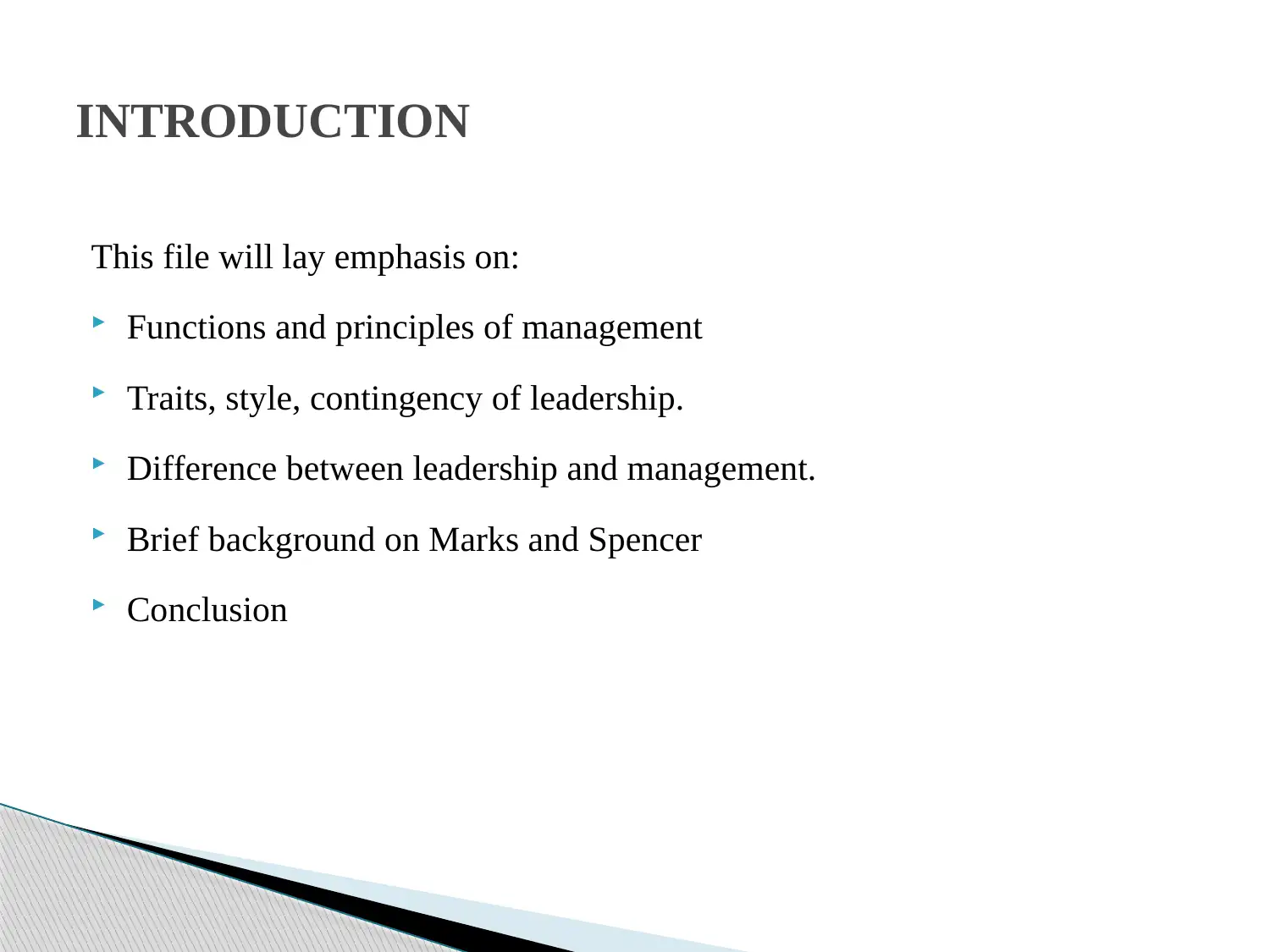
This file will lay emphasis on:
Functions and principles of management
Traits, style, contingency of leadership.
Difference between leadership and management.
Brief background on Marks and Spencer
Conclusion
INTRODUCTION
Functions and principles of management
Traits, style, contingency of leadership.
Difference between leadership and management.
Brief background on Marks and Spencer
Conclusion
INTRODUCTION
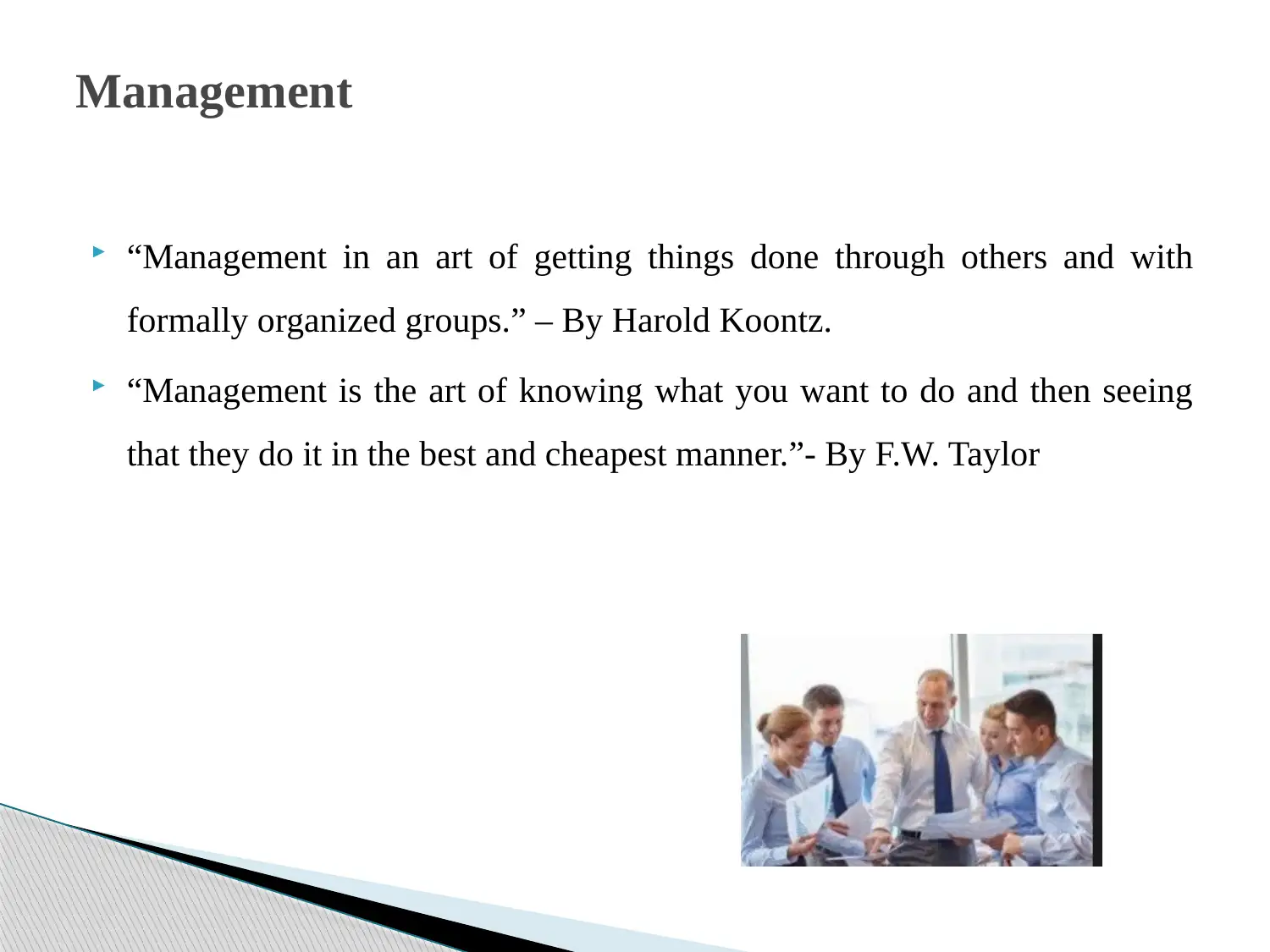
“Management in an art of getting things done through others and with
formally organized groups.” – By Harold Koontz.
“Management is the art of knowing what you want to do and then seeing
that they do it in the best and cheapest manner.”- By F.W. Taylor
Management
formally organized groups.” – By Harold Koontz.
“Management is the art of knowing what you want to do and then seeing
that they do it in the best and cheapest manner.”- By F.W. Taylor
Management
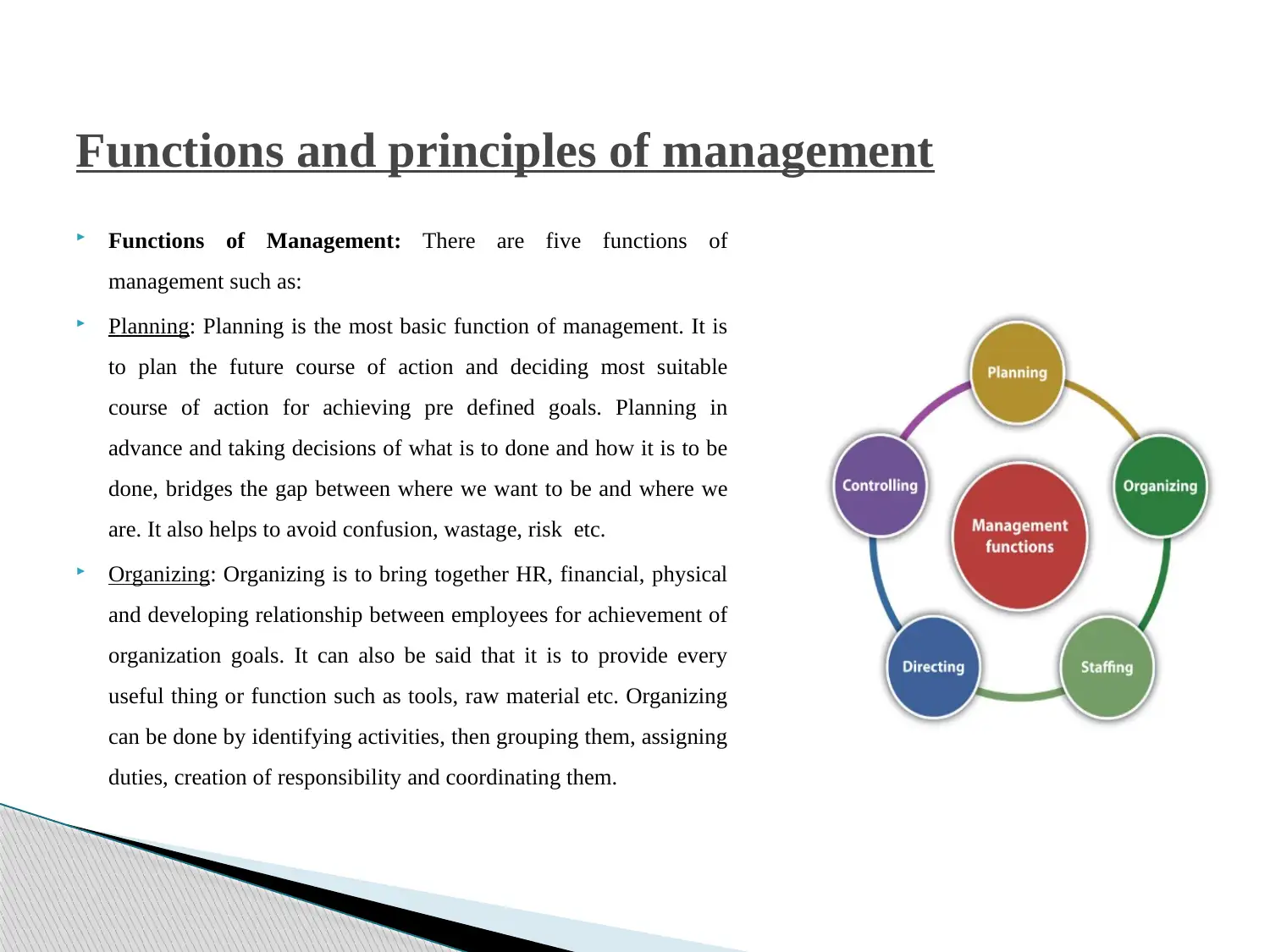
Functions of Management: There are five functions of
management such as:
Planning: Planning is the most basic function of management. It is
to plan the future course of action and deciding most suitable
course of action for achieving pre defined goals. Planning in
advance and taking decisions of what is to done and how it is to be
done, bridges the gap between where we want to be and where we
are. It also helps to avoid confusion, wastage, risk etc.
Organizing: Organizing is to bring together HR, financial, physical
and developing relationship between employees for achievement of
organization goals. It can also be said that it is to provide every
useful thing or function such as tools, raw material etc. Organizing
can be done by identifying activities, then grouping them, assigning
duties, creation of responsibility and coordinating them.
Functions and principles of management
management such as:
Planning: Planning is the most basic function of management. It is
to plan the future course of action and deciding most suitable
course of action for achieving pre defined goals. Planning in
advance and taking decisions of what is to done and how it is to be
done, bridges the gap between where we want to be and where we
are. It also helps to avoid confusion, wastage, risk etc.
Organizing: Organizing is to bring together HR, financial, physical
and developing relationship between employees for achievement of
organization goals. It can also be said that it is to provide every
useful thing or function such as tools, raw material etc. Organizing
can be done by identifying activities, then grouping them, assigning
duties, creation of responsibility and coordinating them.
Functions and principles of management
Secure Best Marks with AI Grader
Need help grading? Try our AI Grader for instant feedback on your assignments.
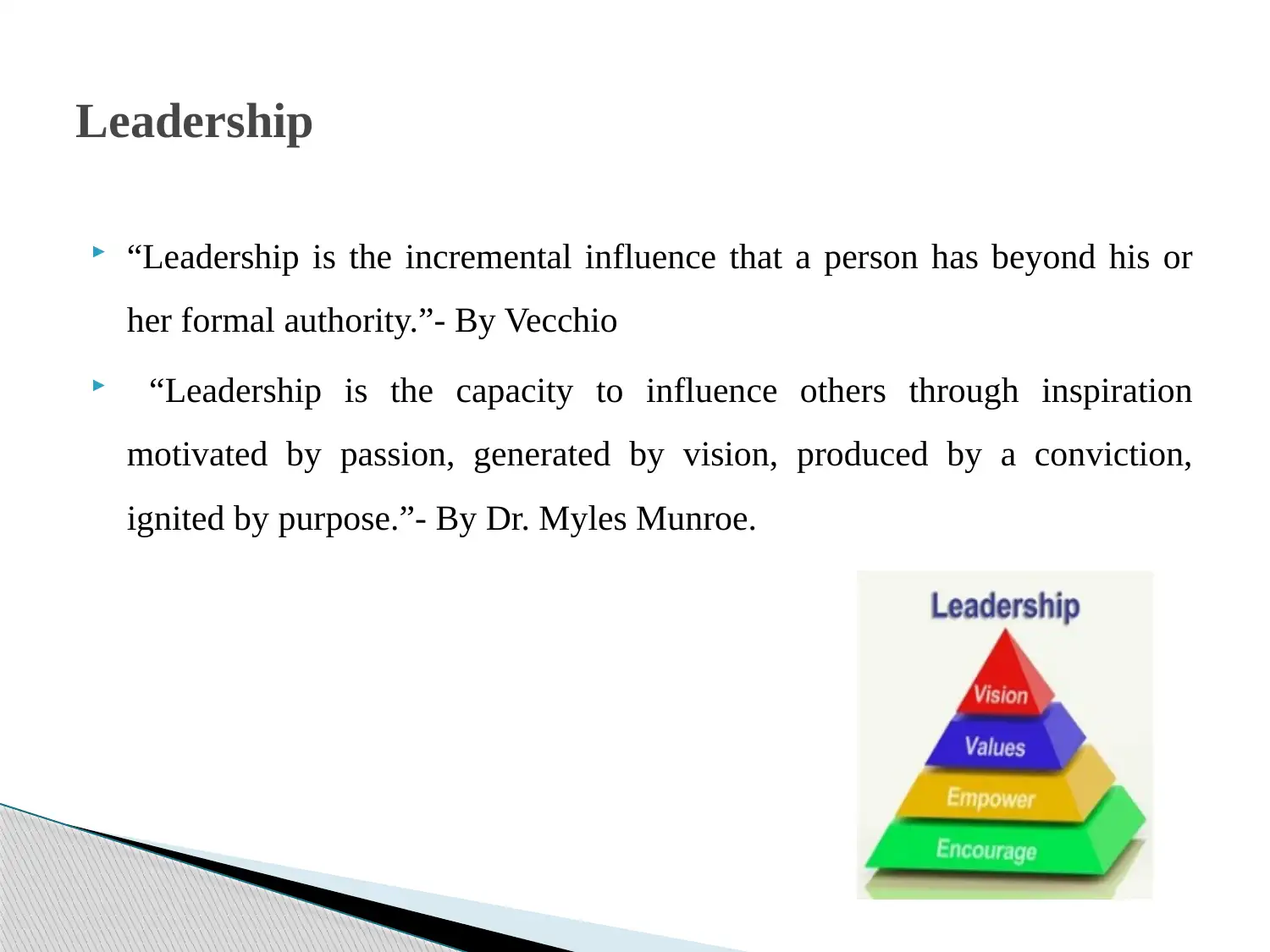
“Leadership is the incremental influence that a person has beyond his or
her formal authority.”- By Vecchio
“Leadership is the capacity to influence others through inspiration
motivated by passion, generated by vision, produced by a conviction,
ignited by purpose.”- By Dr. Myles Munroe.
Leadership
her formal authority.”- By Vecchio
“Leadership is the capacity to influence others through inspiration
motivated by passion, generated by vision, produced by a conviction,
ignited by purpose.”- By Dr. Myles Munroe.
Leadership
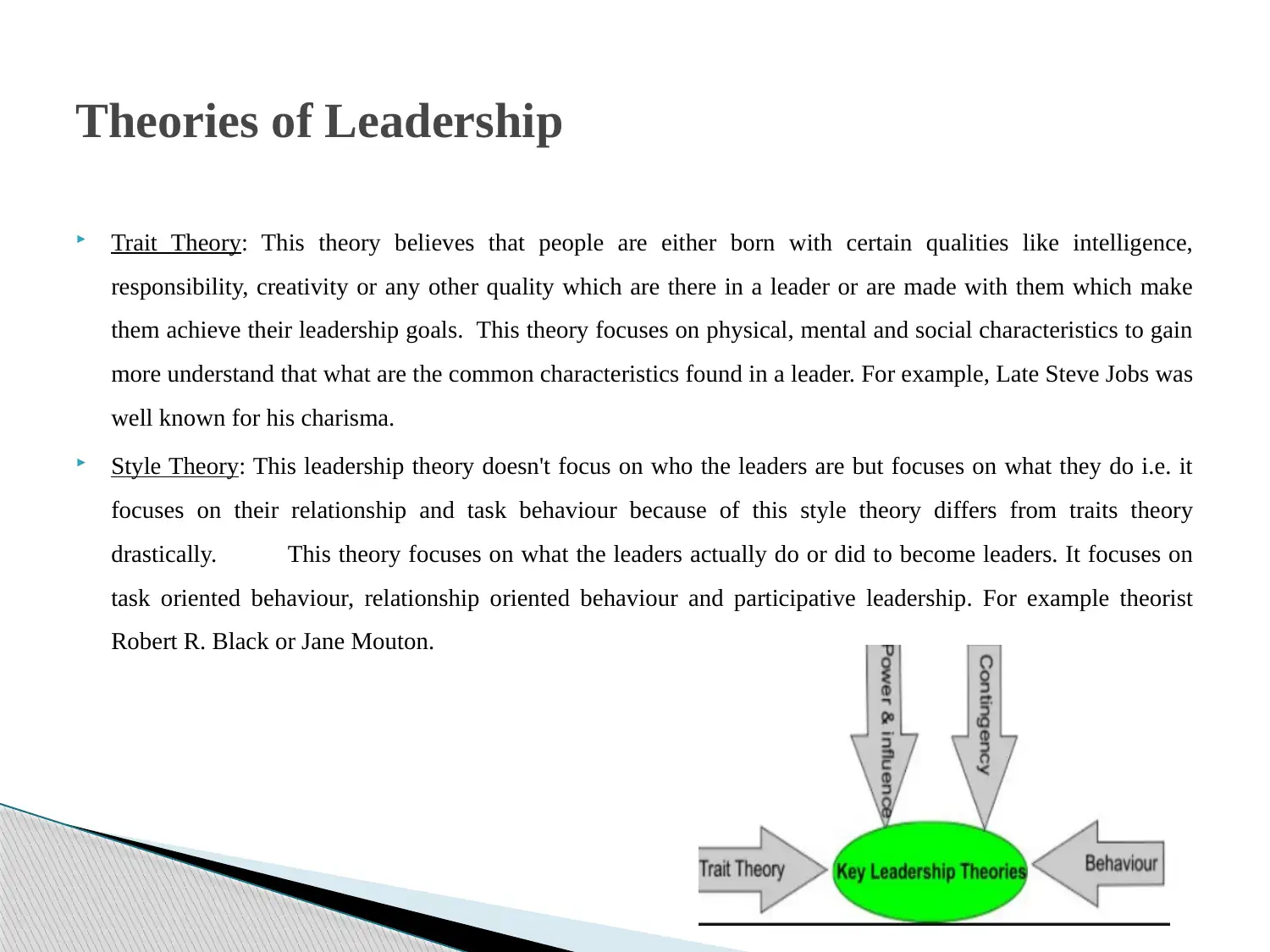
Trait Theory: This theory believes that people are either born with certain qualities like intelligence,
responsibility, creativity or any other quality which are there in a leader or are made with them which make
them achieve their leadership goals. This theory focuses on physical, mental and social characteristics to gain
more understand that what are the common characteristics found in a leader. For example, Late Steve Jobs was
well known for his charisma.
Style Theory: This leadership theory doesn't focus on who the leaders are but focuses on what they do i.e. it
focuses on their relationship and task behaviour because of this style theory differs from traits theory
drastically. This theory focuses on what the leaders actually do or did to become leaders. It focuses on
task oriented behaviour, relationship oriented behaviour and participative leadership. For example theorist
Robert R. Black or Jane Mouton.
Theories of Leadership
responsibility, creativity or any other quality which are there in a leader or are made with them which make
them achieve their leadership goals. This theory focuses on physical, mental and social characteristics to gain
more understand that what are the common characteristics found in a leader. For example, Late Steve Jobs was
well known for his charisma.
Style Theory: This leadership theory doesn't focus on who the leaders are but focuses on what they do i.e. it
focuses on their relationship and task behaviour because of this style theory differs from traits theory
drastically. This theory focuses on what the leaders actually do or did to become leaders. It focuses on
task oriented behaviour, relationship oriented behaviour and participative leadership. For example theorist
Robert R. Black or Jane Mouton.
Theories of Leadership
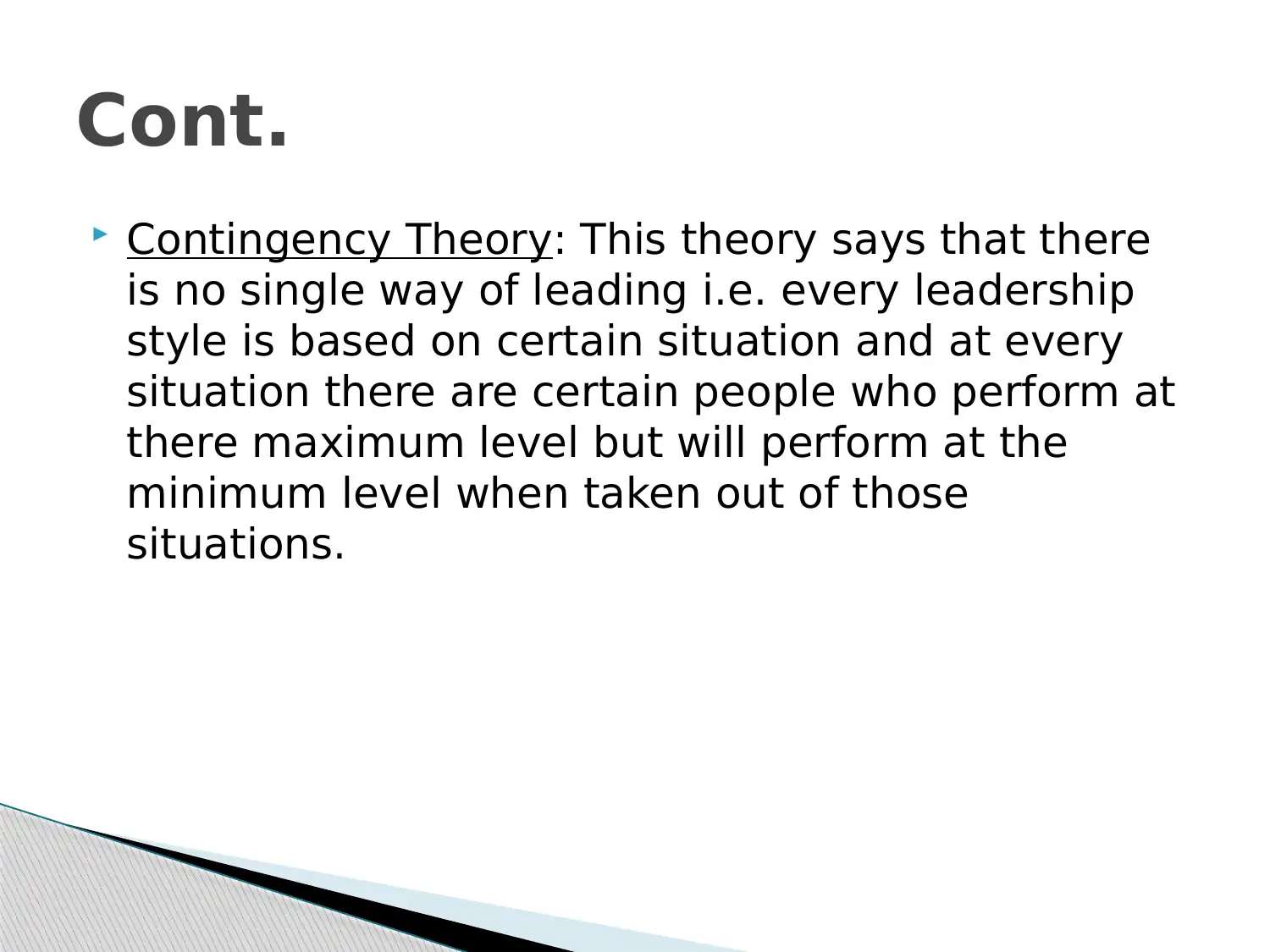
Contingency Theory: This theory says that there
is no single way of leading i.e. every leadership
style is based on certain situation and at every
situation there are certain people who perform at
there maximum level but will perform at the
minimum level when taken out of those
situations.
Cont.
is no single way of leading i.e. every leadership
style is based on certain situation and at every
situation there are certain people who perform at
there maximum level but will perform at the
minimum level when taken out of those
situations.
Cont.
Paraphrase This Document
Need a fresh take? Get an instant paraphrase of this document with our AI Paraphraser
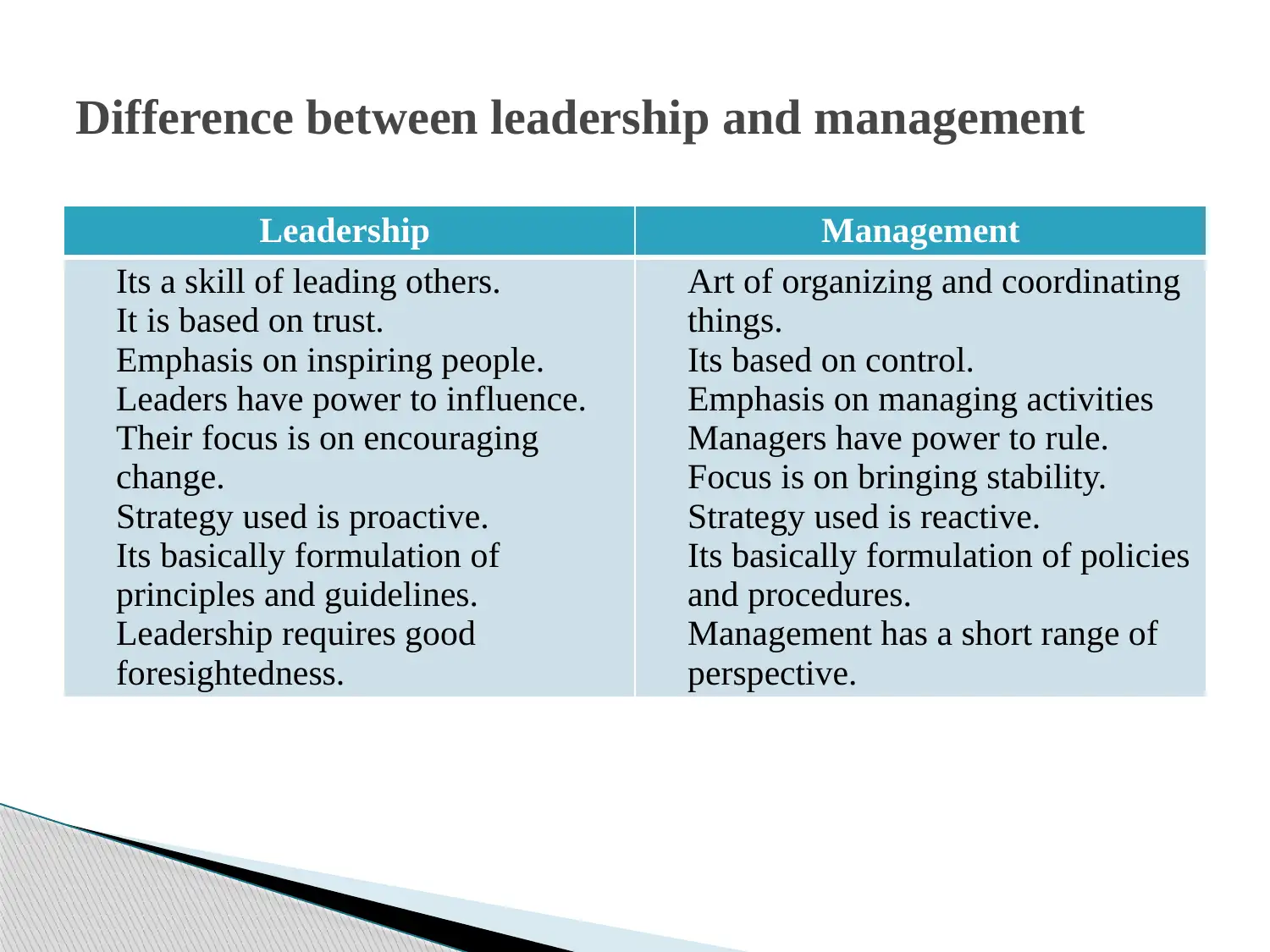
Leadership Management
Its a skill of leading others.
It is based on trust.
Emphasis on inspiring people.
Leaders have power to influence.
Their focus is on encouraging
change.
Strategy used is proactive.
Its basically formulation of
principles and guidelines.
Leadership requires good
foresightedness.
Art of organizing and coordinating
things.
Its based on control.
Emphasis on managing activities
Managers have power to rule.
Focus is on bringing stability.
Strategy used is reactive.
Its basically formulation of policies
and procedures.
Management has a short range of
perspective.
Difference between leadership and management
Its a skill of leading others.
It is based on trust.
Emphasis on inspiring people.
Leaders have power to influence.
Their focus is on encouraging
change.
Strategy used is proactive.
Its basically formulation of
principles and guidelines.
Leadership requires good
foresightedness.
Art of organizing and coordinating
things.
Its based on control.
Emphasis on managing activities
Managers have power to rule.
Focus is on bringing stability.
Strategy used is reactive.
Its basically formulation of policies
and procedures.
Management has a short range of
perspective.
Difference between leadership and management
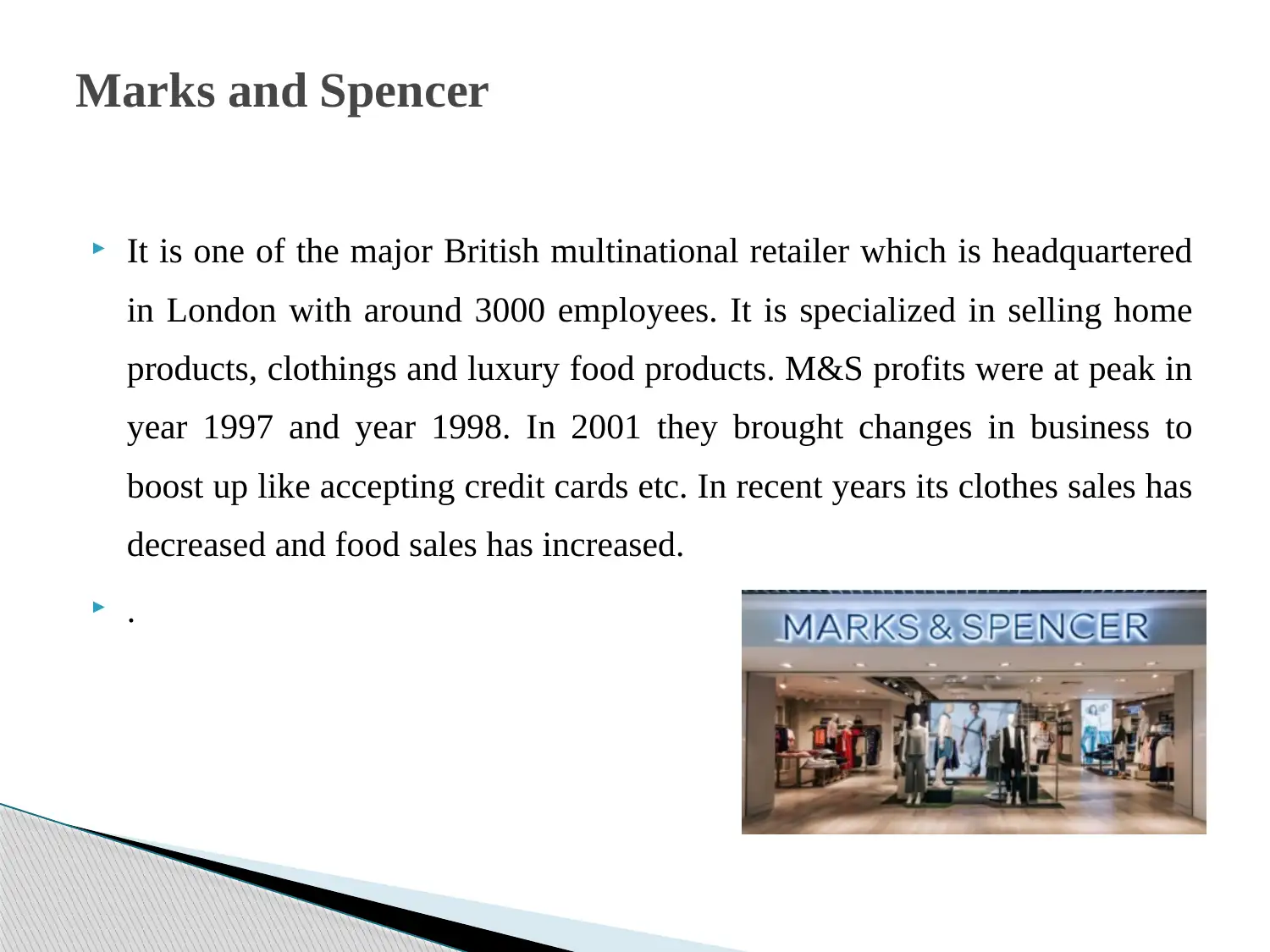
It is one of the major British multinational retailer which is headquartered
in London with around 3000 employees. It is specialized in selling home
products, clothings and luxury food products. M&S profits were at peak in
year 1997 and year 1998. In 2001 they brought changes in business to
boost up like accepting credit cards etc. In recent years its clothes sales has
decreased and food sales has increased.
.
Marks and Spencer
in London with around 3000 employees. It is specialized in selling home
products, clothings and luxury food products. M&S profits were at peak in
year 1997 and year 1998. In 2001 they brought changes in business to
boost up like accepting credit cards etc. In recent years its clothes sales has
decreased and food sales has increased.
.
Marks and Spencer
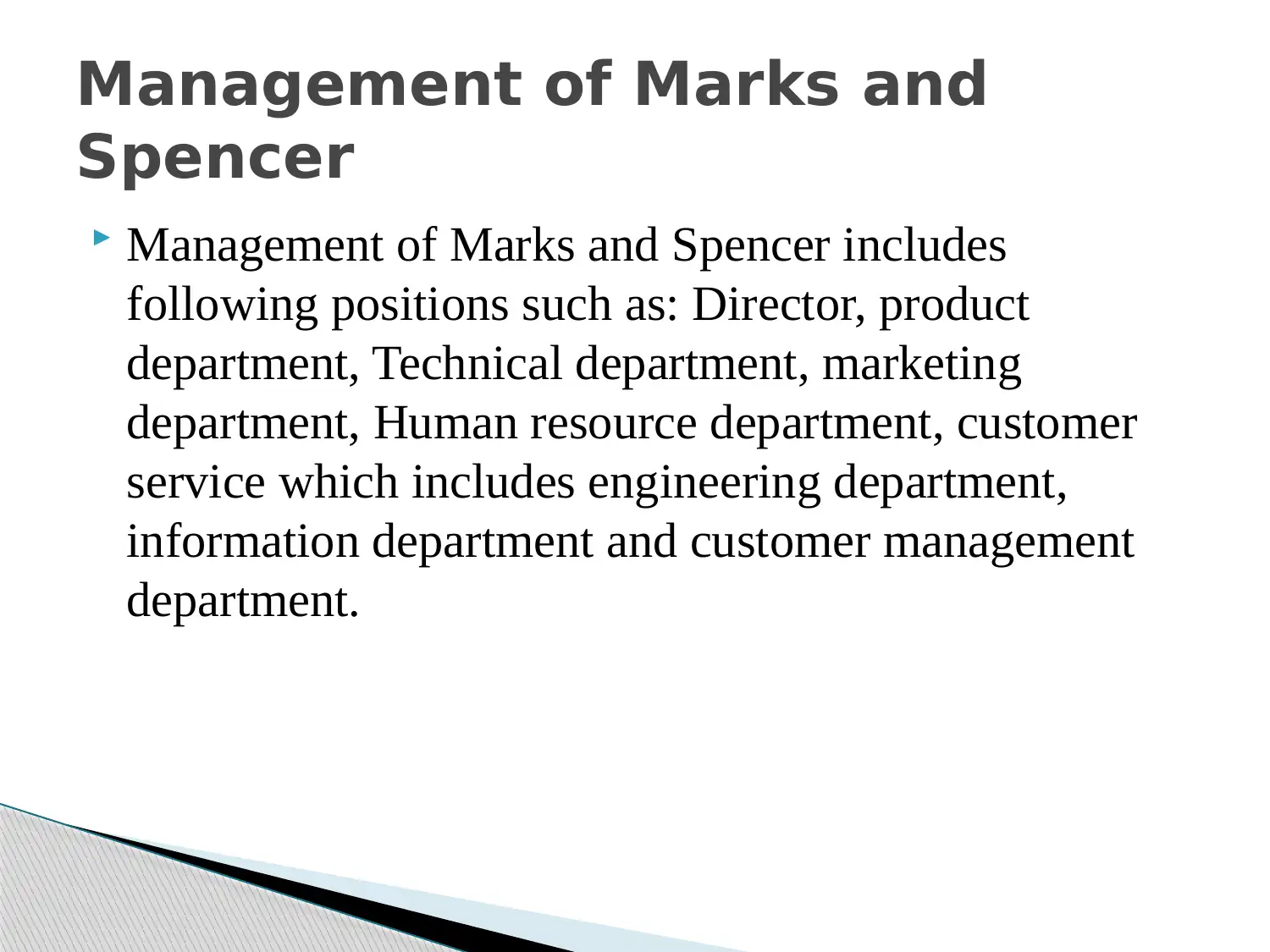
Management of Marks and Spencer includes
following positions such as: Director, product
department, Technical department, marketing
department, Human resource department, customer
service which includes engineering department,
information department and customer management
department.
Management of Marks and
Spencer
following positions such as: Director, product
department, Technical department, marketing
department, Human resource department, customer
service which includes engineering department,
information department and customer management
department.
Management of Marks and
Spencer
Secure Best Marks with AI Grader
Need help grading? Try our AI Grader for instant feedback on your assignments.
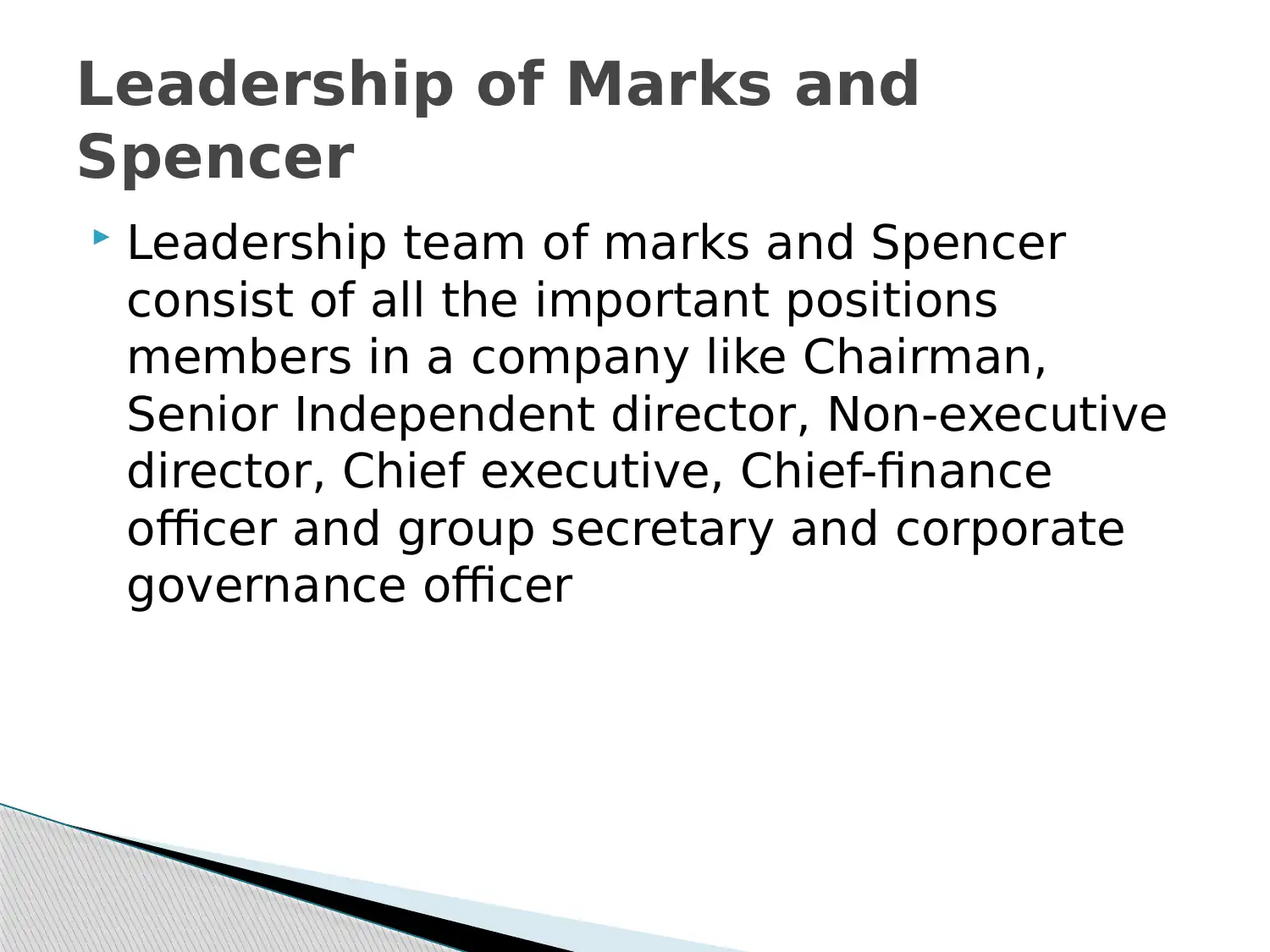
Leadership team of marks and Spencer
consist of all the important positions
members in a company like Chairman,
Senior Independent director, Non-executive
director, Chief executive, Chief-finance
officer and group secretary and corporate
governance officer
Leadership of Marks and
Spencer
consist of all the important positions
members in a company like Chairman,
Senior Independent director, Non-executive
director, Chief executive, Chief-finance
officer and group secretary and corporate
governance officer
Leadership of Marks and
Spencer
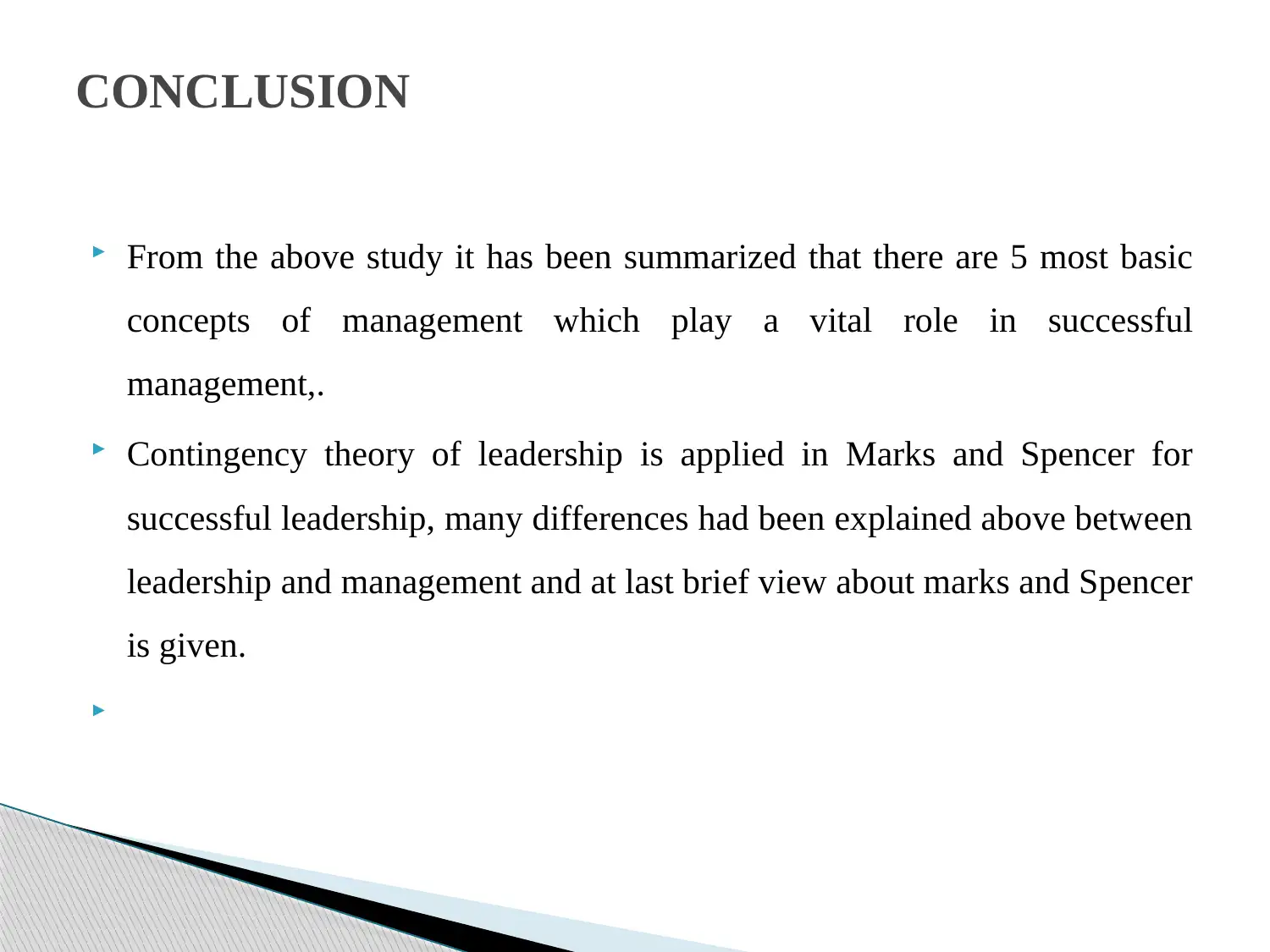
From the above study it has been summarized that there are 5 most basic
concepts of management which play a vital role in successful
management,.
Contingency theory of leadership is applied in Marks and Spencer for
successful leadership, many differences had been explained above between
leadership and management and at last brief view about marks and Spencer
is given.
CONCLUSION
concepts of management which play a vital role in successful
management,.
Contingency theory of leadership is applied in Marks and Spencer for
successful leadership, many differences had been explained above between
leadership and management and at last brief view about marks and Spencer
is given.
CONCLUSION
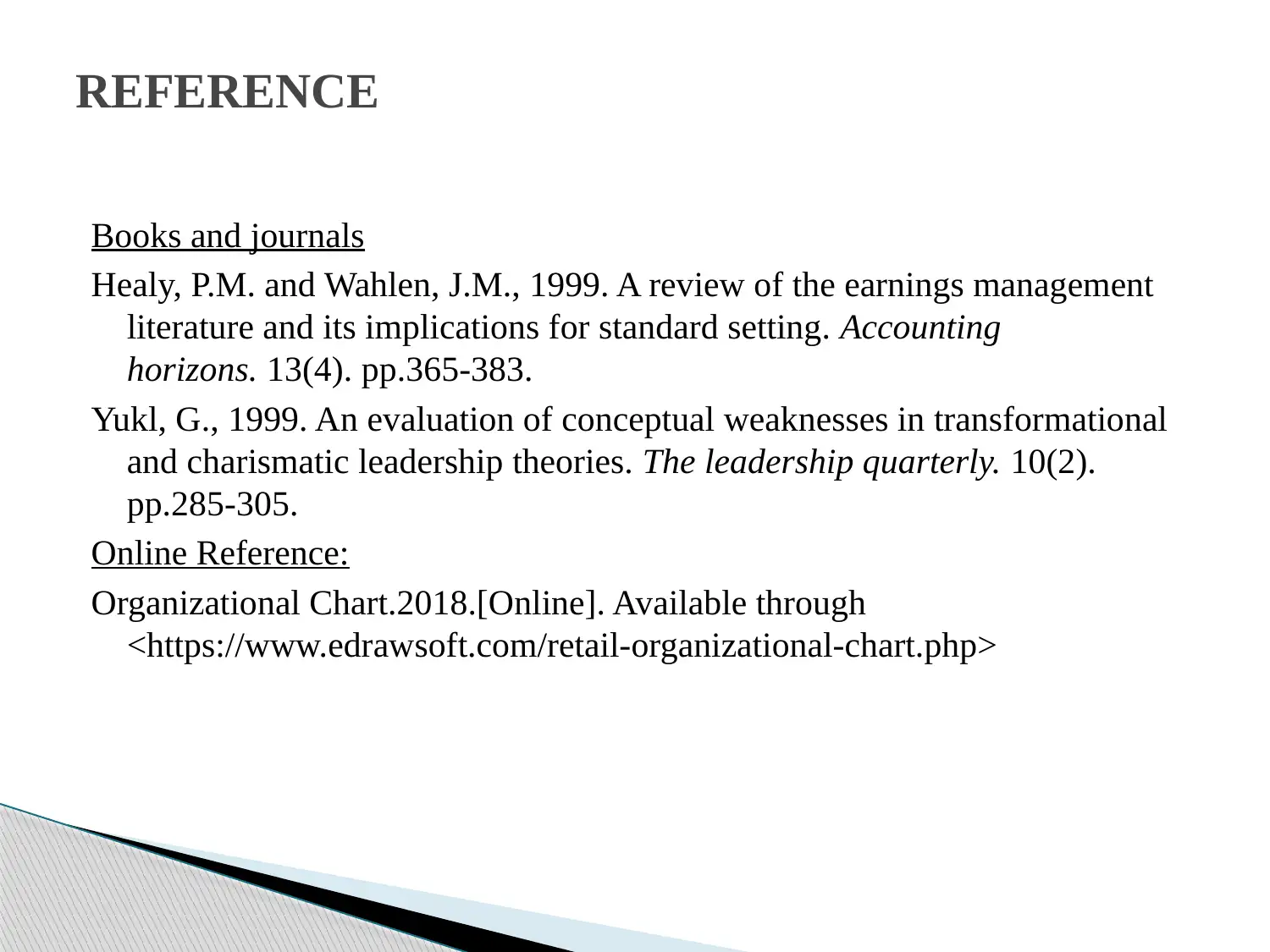
Books and journals
Healy, P.M. and Wahlen, J.M., 1999. A review of the earnings management
literature and its implications for standard setting. Accounting
horizons. 13(4). pp.365-383.
Yukl, G., 1999. An evaluation of conceptual weaknesses in transformational
and charismatic leadership theories. The leadership quarterly. 10(2).
pp.285-305.
Online Reference:
Organizational Chart.2018.[Online]. Available through
<https://www.edrawsoft.com/retail-organizational-chart.php>
REFERENCE
Healy, P.M. and Wahlen, J.M., 1999. A review of the earnings management
literature and its implications for standard setting. Accounting
horizons. 13(4). pp.365-383.
Yukl, G., 1999. An evaluation of conceptual weaknesses in transformational
and charismatic leadership theories. The leadership quarterly. 10(2).
pp.285-305.
Online Reference:
Organizational Chart.2018.[Online]. Available through
<https://www.edrawsoft.com/retail-organizational-chart.php>
REFERENCE
Paraphrase This Document
Need a fresh take? Get an instant paraphrase of this document with our AI Paraphraser

1 out of 14
Related Documents
Your All-in-One AI-Powered Toolkit for Academic Success.
+13062052269
info@desklib.com
Available 24*7 on WhatsApp / Email
![[object Object]](/_next/static/media/star-bottom.7253800d.svg)
Unlock your academic potential
© 2024 | Zucol Services PVT LTD | All rights reserved.





